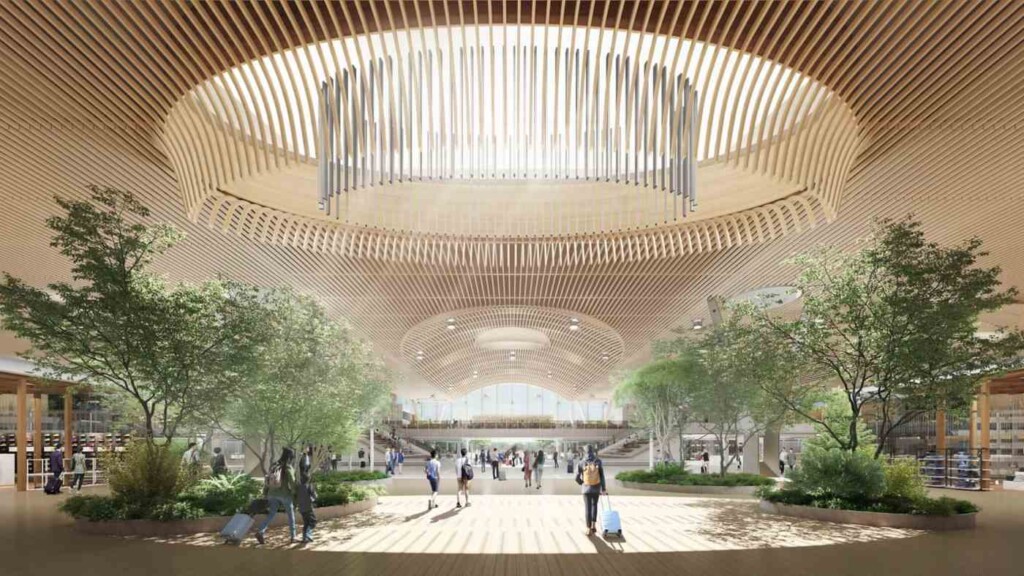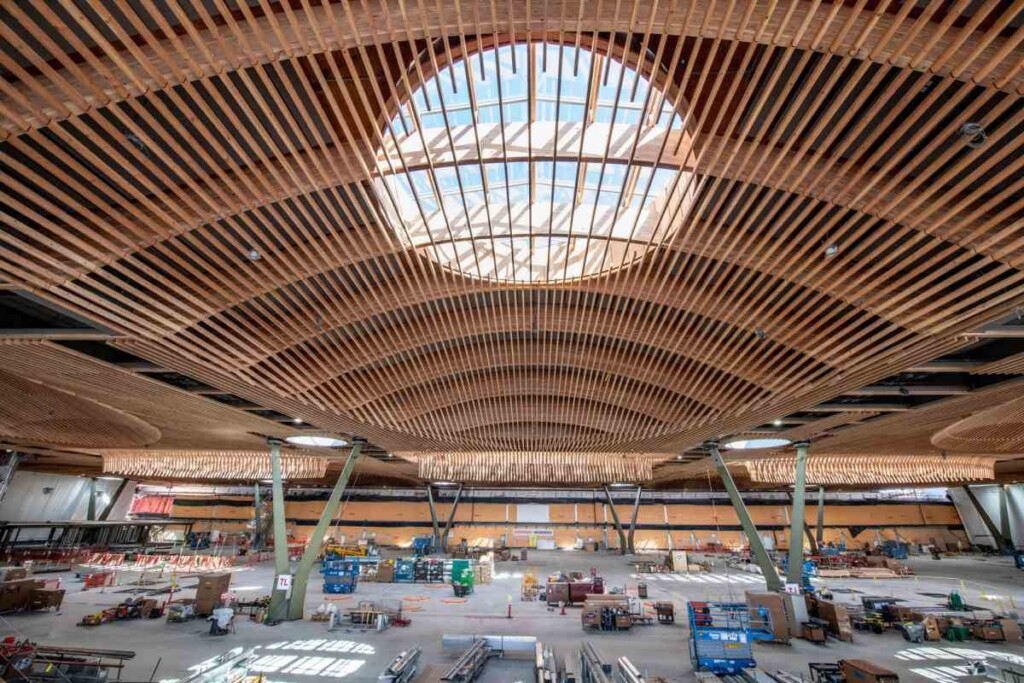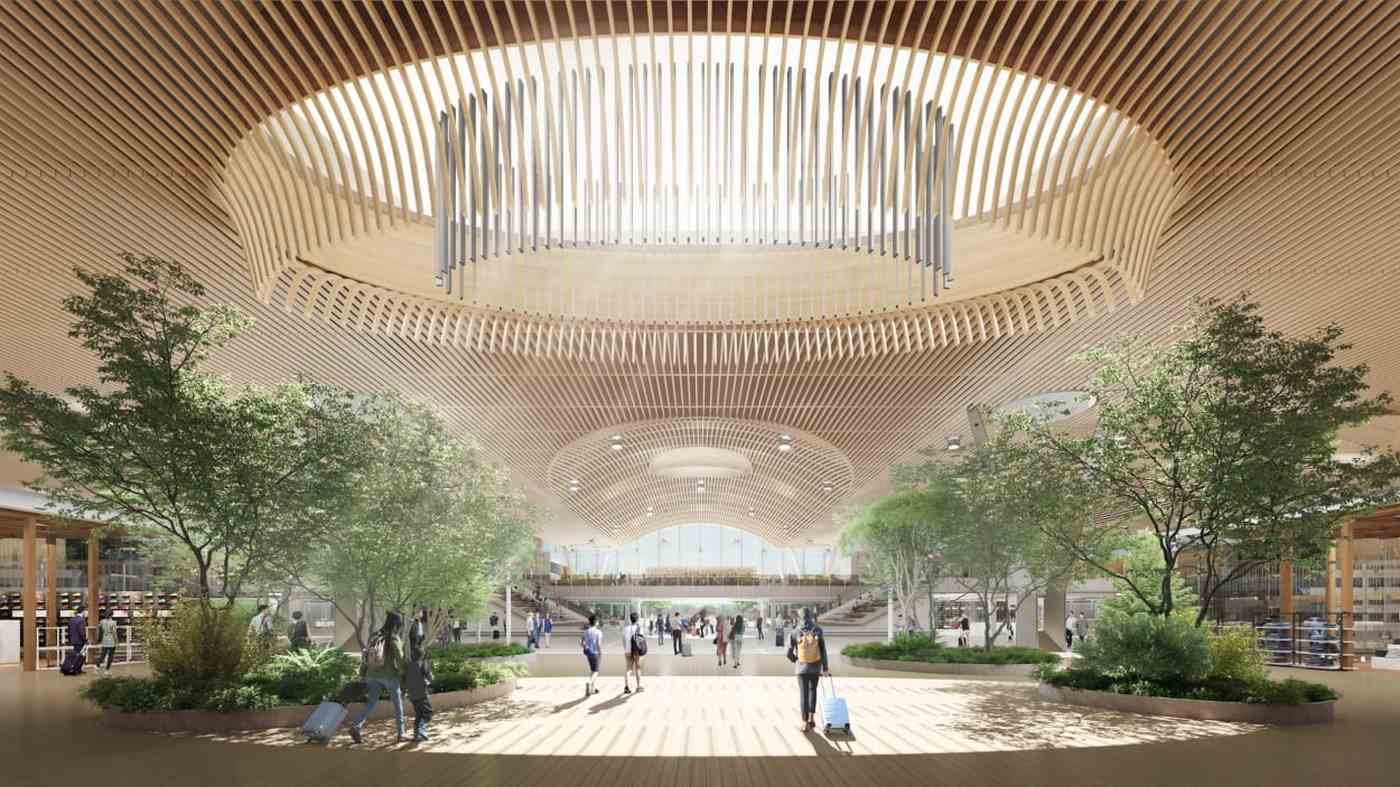
Oregon is famous for forests, and so it makes sense that the new “Port of Portland” airport terminal is going to be built almost entirely of state-of-the-art timber.
Cross-laminated timber (CLT) also known as “mass-timber” is taking the construction world by storm with its incredible durability, robust fire resistance, low carbon footprint, and beautiful aesthetic. In Europe, CLT has been used to build skyscrapers, aka “plyscrapers.”
But CLT is not plywood, and is instead made of long boards pressed together cross-ways with glue and high temperatures, making it strong but also flexible.
In Portland’s new terminal, a giant roof for the main atrium—9 acres in area, is being built with CLT made from Douglas fir, hemlock, and southern yellow pine sourced entirely from within 300 miles of its location, all from either Oregon landowners or Tribal nations.
“The process was so exacting, the architects knew every board that frames the skylights above the 26 Y-columns came from the Yakama Nation, and all the double beams in the six massive oval skylights came from the Coquille Indian Tribe,” writes Patrick Sisson from Fast Company.
“The Portland project has almost created a market across the country,” Dean Lewis, director of mass timber and prefabrication for Skanska, the company that is handling construction, told the magazine. “We’re getting calls from Atlanta and New York asking about the kinds of timber we can get within 300 miles of the city. ‘Can we do that here?’ They all want that local story.”

Along with being a beautiful place to embark and disembark, the terminal is envisioned as a huge flexing of the muscles of the American mass timber market, which internationally is mainly controlled by other countries like Sweden and Canada.
SWEDEN’S MASS TIMBER MARKET: Sweden Is Trying to Build a Whole City Borough Out of Wood to ‘Show What is Possible’
Mass timber is also, despite the chopping down of the trees, a low-carbon building solution. Concrete manufacturing is one of the three largest emitters of greenhouse gases in the world economy, and part of the appeal of mass timber is that by the time the tree is of the right age for building, the carbon absorbed in the tree is not only significant but removed from the global carbon cycle when it’s turned into mass timber.
MORE ALTERNATIVE BUILDS: World’s Tallest ‘Hempcrete’ Building in South Africa Captures More Carbon than it Emits
If, as is so often the case on timber plantations, trees die of natural causes, their decomposing releases that carbon into the atmosphere anew.
SHARE This Beautiful All-Oregon Airport With Your Friends From The Northwest…




















